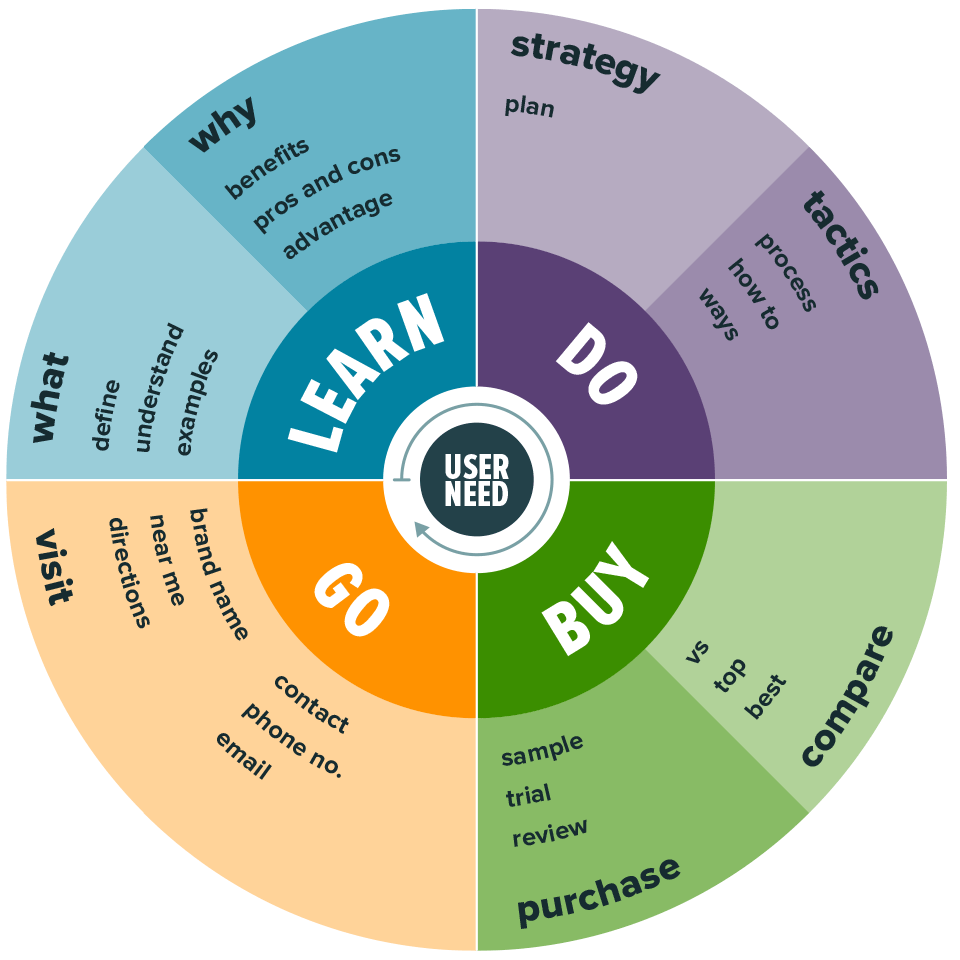Shop At Haya: Your Ultimate Shopping Guide
Discover the best shopping tips, trends, and deals for a smarter buying experience.
Cracking the Code of Search Intent
Unlock the secrets of search intent and boost your SEO game! Discover strategies to connect with your audience like never before.
Understanding the Different Types of Search Intent: A Comprehensive Guide
Understanding the different types of search intent is crucial for creating content that meets the needs of your audience. Search intent generally falls into four main categories: informational, navigational, transactional, and commercial investigation. Each type reflects the user's purpose behind their search query. For instance, someone searching for 'how to bake a cake' is likely looking for instructions, which indicates an informational intent, while a query like 'buy chocolate cake near me' shows transactional intent, as the user is ready to make a purchase.
Recognizing these categories allows content creators and SEO specialists to tailor their strategies effectively. For example, informational content can be optimized through detailed articles, blog posts, or videos, while transactional intents might better suit product pages or service offerings. Additionally, understanding the nuances of navigational and commercial investigation intents can enhance your site's user experience by ensuring that visitors can easily find what they need. By catering to these intents, you not only improve your SEO but also increase the likelihood of better engagement and conversions.

How to Optimize Your Content for Search Intent: Tips and Best Practices
Understanding and optimizing your content for search intent is crucial for improving your website's visibility in search engine results. Start by researching your target audience and the specific queries they are using. This involves examining the keywords that align with their needs. Consider classifying these keywords into different categories of search intent: informational, navigational, and transactional. By tailoring your content to address these distinct types of intent, you can create a more targeted and effective strategy.
Once you've identified the search intent behind your keywords, the next step is to ensure your content meets those needs. Here are some best practices to follow:
- Use clear and concise headings that reflect the user's query.
- Incorporate relevant keywords naturally throughout your content.
- Provide valuable information by answering common questions related to the topic.
- Utilize different content formats, such as videos and infographics, to enhance user engagement.
By implementing these tips, you can significantly improve your content's ability to satisfy search intent and drive more organic traffic to your site.
The Role of Search Intent in SEO: Why It Matters for Your Strategy
Understanding search intent is crucial for crafting a successful SEO strategy. Search intent refers to the reason behind a user's query—what they are really looking for when they type in a keyword. By aligning your content with the different types of search intent—be it informational, navigational, transactional, or commercial—you can create more targeted and effective content that meets the needs of your audience. For instance, a user searching for 'best coffee maker' is likely looking for product reviews and comparisons, while someone searching for 'buy coffee maker online' has a transactional intent, ready to make a purchase.
Integrating search intent into your SEO strategy means refining your keyword research process. This can involve using tools to analyze the intent behind keywords and adjusting your content accordingly. For instance, if you're targeting keywords with high commercial intent, your content should include product pages, buying guides, or even customer testimonials. Furthermore, understanding user intent helps in organizing your content more effectively, ensuring you provide multiple answers to related queries. In summary, catering to search intent not only enhances user satisfaction but also boosts your site's visibility in search engines, making it an essential aspect of any comprehensive SEO strategy.